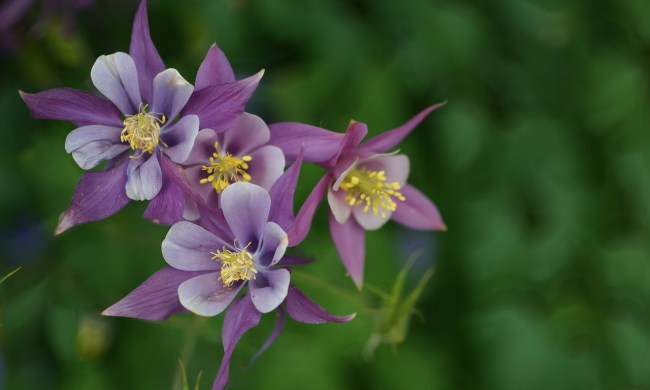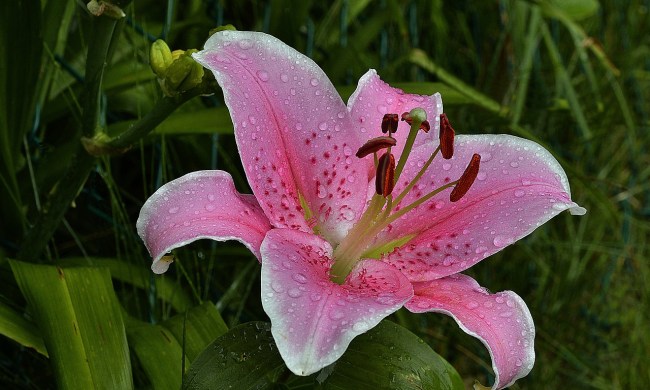From its beautiful blooms to its fresh, sweet fragrance, jasmine is one of the loveliest flowers to incorporate into your indoor jungle or outdoor garden. Of course, it can be a notoriously tricky plant to figure out, especially if you’re a flower novice. But once you’ve figured out its needs and how to best incorporate it into your garden, you’ll be rewarded with long periods of gorgeous, aromatic blooms. Ahead, we’ve broken down what you need to know about jasmine plant care.
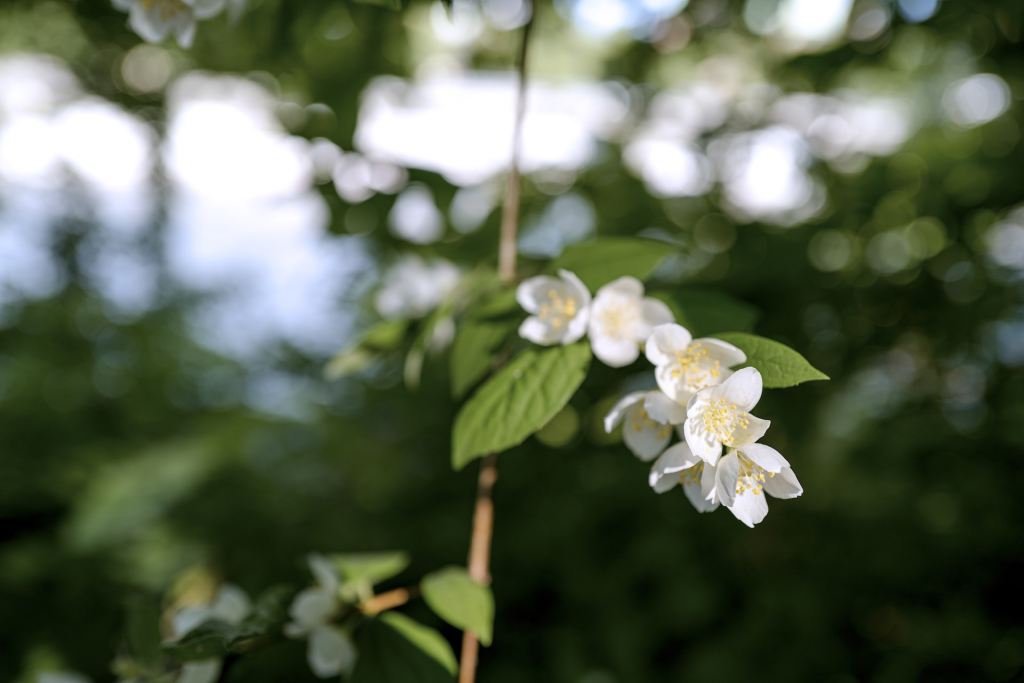
What is jasmine?
Jasmine is an incredibly versatile plant when it comes to landscaping. Depending on the variety, you can grow it as a groundcover, let it climb on a trellis, or even keep it as a potted plant indoors. It’s best known for its dainty blooms that can be yellow, white, or cream in color — and certain varieties can even produce pretty pink flowers.
Some jasmine plants are evergreen, so their leaves stay green and glossy all year long instead of dropping during the autumn and winter. There’s a wide range of jasmine, from common white jasmine that blooms in the late spring to winter jasmine, which puts out flowers during late winter.
What’s most notable about jasmine is that the blooms smell like a sweet, light perfume, which attracts hummingbirds, bees, and butterflies. The strong smell can irritate those sensitive to fragrances so keep in mind anyone who may be in contact with jasmine before you plant it.
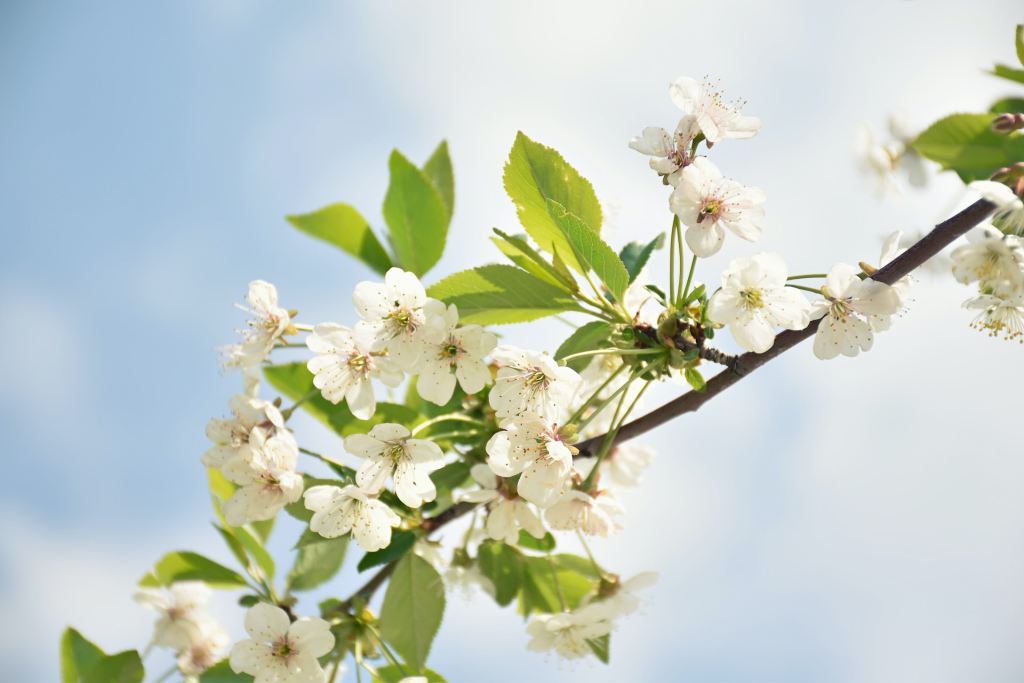
Choosing the right variety for you based on temperature
Jasmine benefits greatly from warm temperatures. Its sweet spot temperature-wise is around 60 to 75 degrees Fahrenheit, although it’s usually hardy down to 40 degrees. If you live in an area prone to winters where temperatures regularly dip below 40 degree Fahrenheit, bring your plant indoors if it's kept in a pot. You could also place your outdoor plant into a greenhouse or mulch it with compost to offer it protection.
Jasmine plants are typically hardy to zones 7 through 10, but its cold hardiness depends on the variety that you pick up. Asian star jasmine will be hardier in cold climates, while Arabian jasmine will thrive in a warm, humid region. Pick the variety best suited for your area for the most prolific plant possible. You can always look at the selection at your local nursery, which will likely carry the just-right cultivar for your specific climate.

Giving your jasmine the right lighting
Like most plants, jasmine can be a bit finicky when it comes to how much and what kind of light it gets. But light, of course, will be essential for getting healthy blooms. Here's how to give your jasmine plant the best lighting possible.
Step 1: For outdoor growing, keep the jasmine plant in either partial shade or full sun, depending on the specific jasmine variety.
Step 2: For indoor growing, place the jasmine plant near a south-facing window. Supplement it with artificial grow lights if necessary.
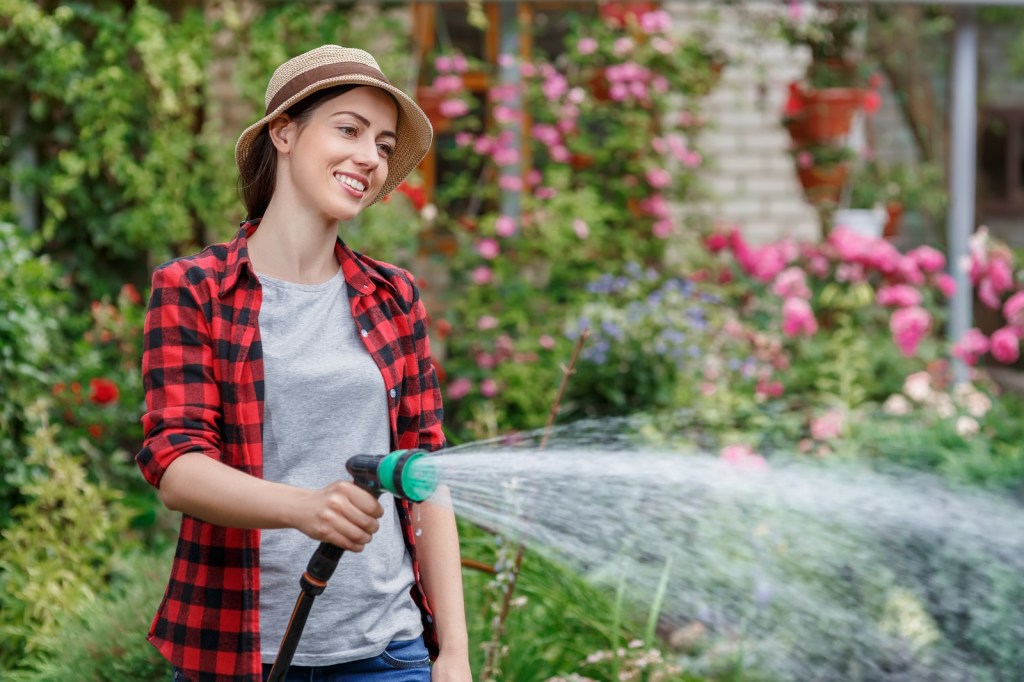
Watering your jasmine plant
Jasmine appreciates adequately moist, fertile soil. Watering your jasmine plant will help it grow strong and healthy, but you certainly don't want to overdo it.
Step 1: Plant the jasmine in a sandy, loamy mix to make sure the soil retains moisture but not so much as to cause root rot.
Step 2: Water your jasmine plant weekly. During hot, dry weather, you will likely need to water more often, as the plant is native to tropical regions and will not tolerate drought.
Step 3: Repot the plant if it becomes rootbound to ensure it gets adequate water.
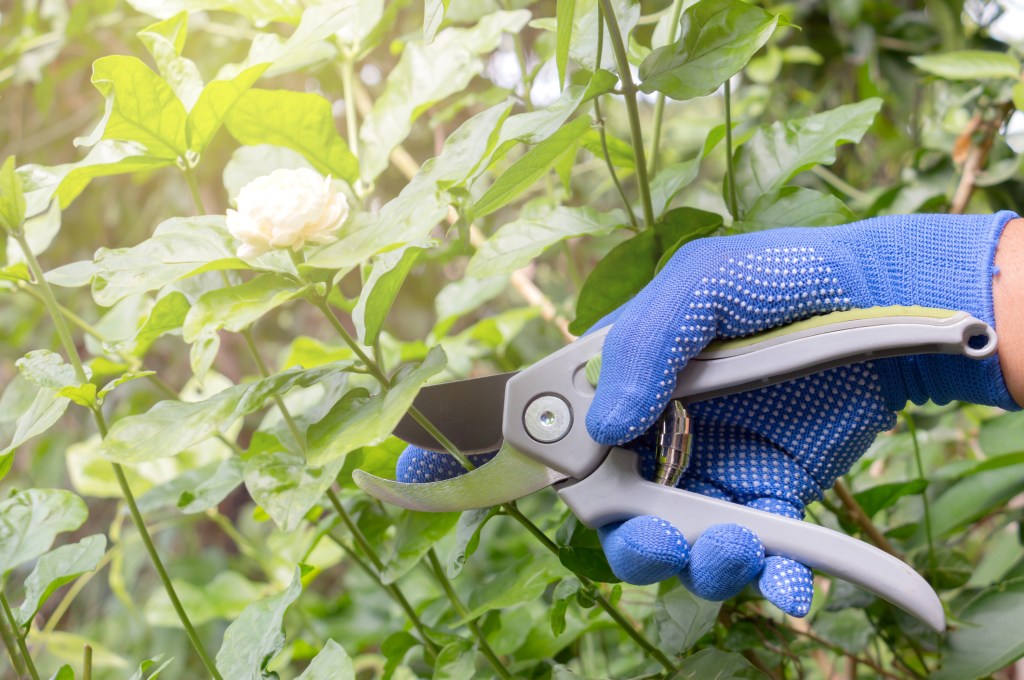
Pruning jasmine
Jasmine is a pretty versatile plant when it comes to landscaping. Occasionally cutting it down will help it look presentable and grow vigorously.
Step 1: If you enjoy the vining look, you can train the jasmine to climb up a wall or fence with a trellis or some type of wiring.
Step 2: To maintain a shrub-like look, keep the jasmine in the ground or in a large planter.
Step 3: Use sharp, sterilized garden shears to prune your jasmine and promote growth. You can also remove diseased, damaged, or tangled branches as you prune. Just remember to prune right after the plant flowers so that it has time to recover by the next time it's ready to bloom.
Step 4: If you notice branches growing in an awkward direction, prune them back and use a trellis or wire to retrain them.
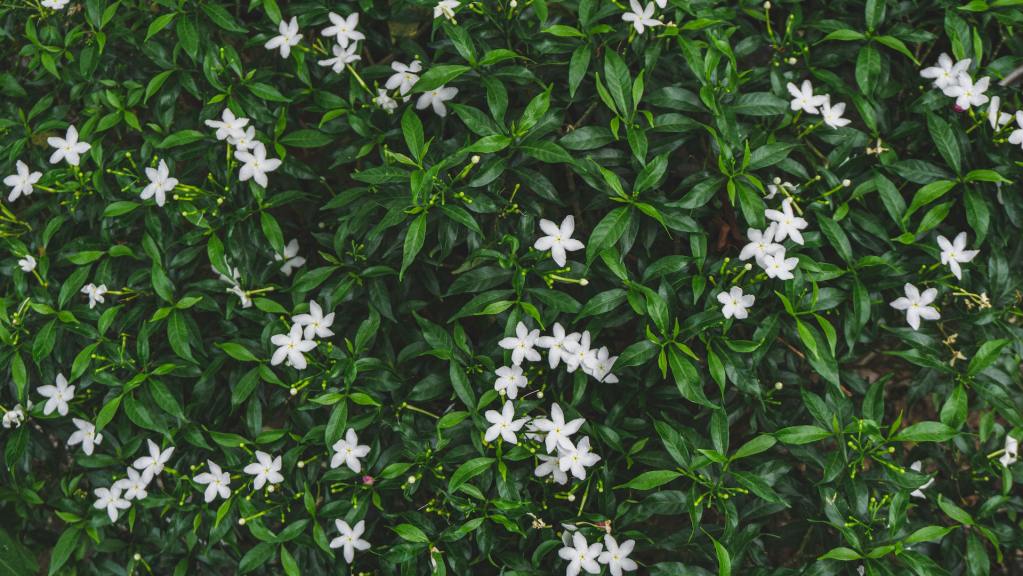
Encouraging jasmine to bloom
Proper feeding and pinching can help jasmine bloom throughout its growing season. Other than giving your plant its watering and lighting needs, here are some tips and tricks for getting it to produce its gorgeous flowers.
Step 1: When your jasmine pushes out new growth, give it a blooming fertilizer every week; a diluted 7-9-5 fertilizer high in phosphorus works best for flower production. Do not use a fertilizer too high in nitrogen, as that will encourage foliage growth at the expense of blooms.
Step 2: Pinch off spent blooms to help extend the blooming period.
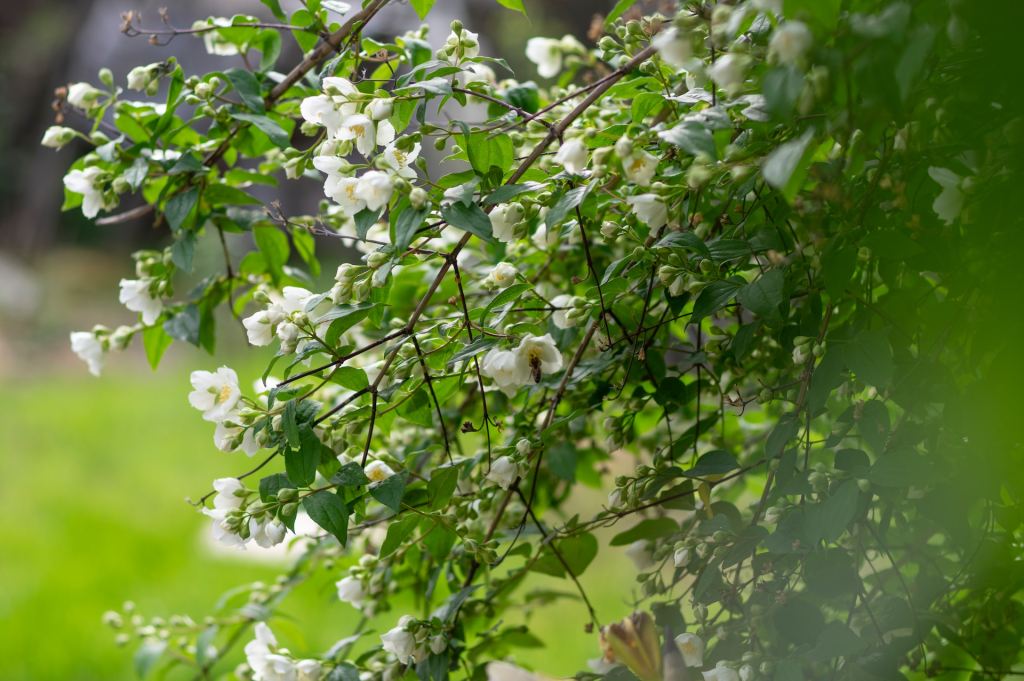
How to plant jasmine
Whether you have a cutting that's ready to be transplanted or a full plant from the nursery, situating your jasmine in the garden is actually quite simple. The best time of year to plant your jasmine plant out in the garden is early summer or late autumn, so take note of the season before buying and transplanting your jasmine.
With all of the tips above paired with the steps below, you'll be able to find a permanent home for your jasmine plant.
Step 1: Pick a location for your jasmine plant. Make sure that it will get the right lighting (either partial shade or full sun) and temperature that it needs in this area.
Step 2: Dig a hole for your jasmine plant, giving it about 8 feet of space from other plants. The hole should only be a little deeper than the nursery pot your jasmine plant currently resides in.
Step 3: Add compost to amend the soil structure and provide your plant with nutrients. You can also mix perlite and sand in the garden soil to improve drainage.
Step 4: If your plant roots look compact, loosen them ever so slightly. Place your jasmine plant in the soil, inserting a trellis or stake in the soil as needed for support. Add soil to fill out the rest of your planting hole.
Growing jasmine can be a daunting undertaking, especially if you’re not familiar with taking care of flowers. Thankfully, though, it's really much easier than it might seem at first. It all starts with finding the appropriate cultivar for your climate zone so that you have the best shot possible at nourishing a lush and healthy plant. Then, provide your jasmine with plenty of warmth and sun, fertilize your plant adequately, and prune as needed. Before you know it, you’ll be on your way to enjoying beautiful, fragrant blooms!



